Find out which of the figures a b c and d is a rearrangement of the parts of the given figurex
1 a
2 b
3 c
4 d
Answer : Explanation :Answer: Explanation:
Related Solutions
a problem figure and four answer figures (A),(B ) ,(C ) and (D ) are given . Find out the answer figure formed from cutting part of problem figure
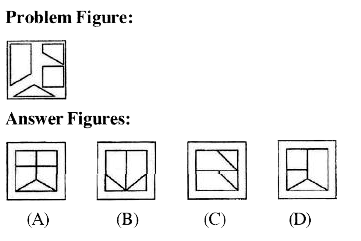
View Solutiona problem figure and four answer figures (A),(B ) ,(C ) and (D ) are given . Find out the answer figure formed from cutting part of problem figure
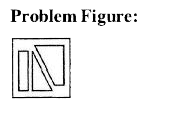

View Solutiona problem figure and four answer figures (A),(B ) ,(C ) and (D ) are given . Find out the answer figure formed from cutting part of problem figure
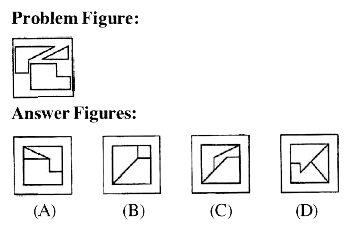
View Solutiona problem figure and four answer figures (A),(B ) ,(C ) and (D ) are given . Find out the answer figure formed from cutting part of problem figure

View Solutiona problem figure and four answer figures (A),(B ) ,(C ) and (D ) are given . Find out the answer figure formed from cutting part of problem figure
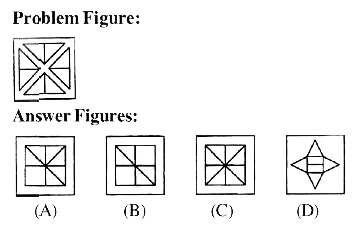
View SolutionIn question figure is embedded in any one of the four alternatives (A), (B), (C) and (D). Find out the alternatives which contains question figure as its part.

View SolutionIn question figure is embedded in any one of the four alternatives (A), (B), (C) and (D). Find out the alternatives which contains question figure as its part.
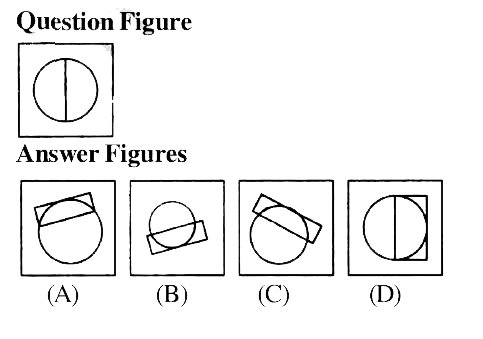
View SolutionIn question figure is embedded in any one of the four alternatives (A), (B), (C) and (D). Find out the alternatives which contains question figure as its part.
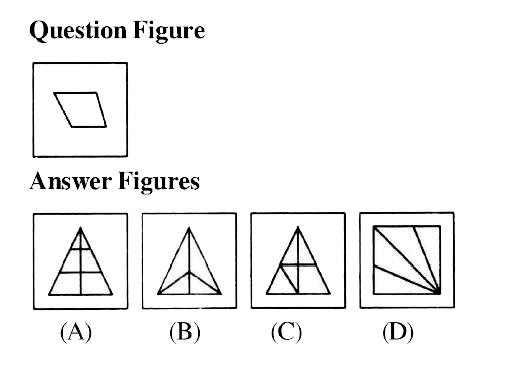
View SolutionIn question figure is embedded in any one of the four alternatives (A), (B), (C) and (D). Find out the alternatives which contains question figure as its part.
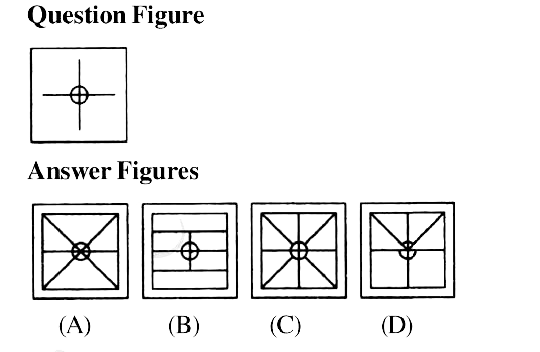
View SolutionIn question figure is embedded in any one of the four alternatives (A), (B), (C) and (D). Find out the alternatives which contains question figure as its part.

View SolutionCheck out Figure A, B, C and D. In which of the given options, A, B, C and D all four are correct?
View Solutionनीचे दिए गए प्रत्येक प्रश्न में एक प्रश्न चित्र दिया गया है जिसका एक भाग लुप्त दर्शाया गया है। तथा प्रश्न चित्र में नीचे की ओर दिए गए उत्तर चित्र (a), (b), (c) और (d) पर विचार करें तथा उस उत्तर चित्र का पता लगाएँ जिसको बिना दिशा परिवर्तन के प्रश्न चित्र का पैटर्न पूरा करने के लिए प्रश्न चित्र के लुप्त भाग में बिठाया जा सकें।
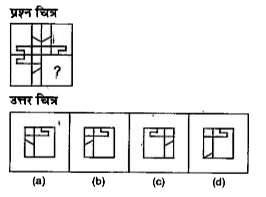
View Solutionनीचे दिए गए प्रत्येक प्रश्न में एक प्रश्न चित्र दिया गया है जिसका एक भाग लुप्त दर्शाया गया है। तथा प्रश्न चित्र में नीचे की ओर दिए गए उत्तर चित्र (a), (b), (c) और (d) पर विचार करें तथा उस उत्तर चित्र का पता लगाएँ जिसको बिना दिशा परिवर्तन के प्रश्न चित्र का पैटर्न पूरा करने के लिए प्रश्न चित्र के लुप्त भाग में बिठाया जा सकें।
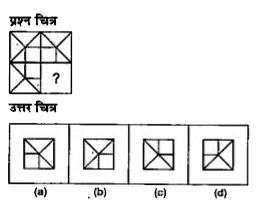
View Solutionनीचे दिए गए प्रत्येक प्रश्न में एक प्रश्न चित्र दिया गया है जिसका एक भाग लुप्त दर्शाया गया है। तथा प्रश्न चित्र में नीचे की ओर दिए गए उत्तर चित्र (a), (b), (c) और (d) पर विचार करें तथा उस उत्तर चित्र का पता लगाएँ जिसको बिना दिशा परिवर्तन के प्रश्न चित्र का पैटर्न पूरा करने के लिए प्रश्न चित्र के लुप्त भाग में बिठाया जा सकें।
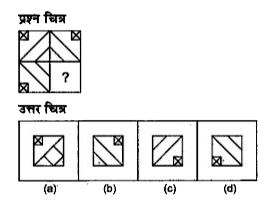
View Solutionनीचे दिए गए प्रत्येक प्रश्न में एक प्रश्न चित्र दिया गया है जिसका एक भाग लुप्त दर्शाया गया है। तथा प्रश्न चित्र में नीचे की ओर दिए गए उत्तर चित्र (a), (b), (c) और (d) पर विचार करें तथा उस उत्तर चित्र का पता लगाएँ जिसको बिना दिशा परिवर्तन के प्रश्न चित्र का पैटर्न पूरा करने के लिए प्रश्न चित्र के लुप्त भाग में बिठाया जा सकें।
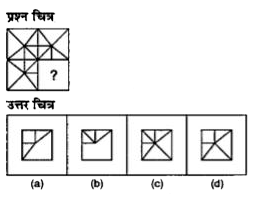
View SolutionIn each of the questions four figures (A), (B), (C) and (D) are given. There are three figures which are similar in any sense except one. Find out the odd figure.

View SolutionQuestion figure is followed by four alternatives, find out which of the figure from (A), (B), (C) and (D) can be formed from the pieces given in question figure.
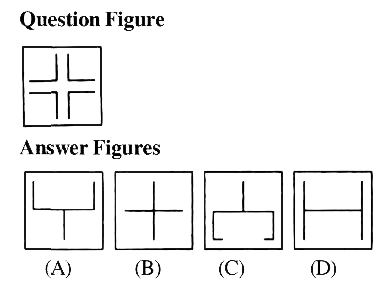
View SolutionQuestion figure is followed by four alternatives, find out which of the figure from (A), (B), (C) and (D) can be formed from the pieces given in question figure.
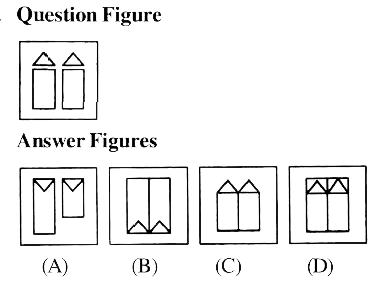
View SolutionQuestion figure is followed by four alternatives, find out which of the figure from (A), (B), (C) and (D) can be formed from the pieces given in question figure.
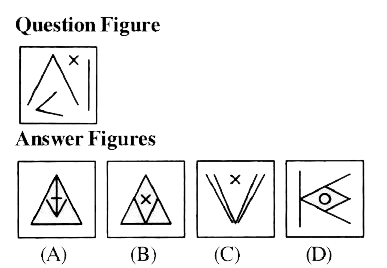
View SolutionQuestion figure is followed by four alternatives, find out which of the figure from (A), (B), (C) and (D) can be formed from the pieces given in question figure.

View Solution